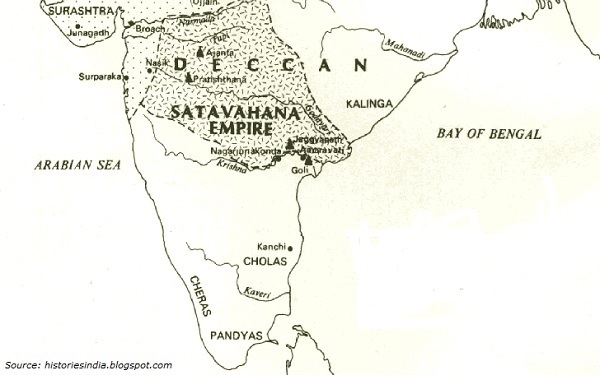
- Ancient Indian History - Home
- Study of Indian History
- Writing of Ancient Indian History
- Imperialist Historiography
- Historiography Nationalist Approach
- Marxist School of History
- Sources of Ancient Indian History
- Archaeological Sources
- Geographical Background
- Geography in Ancient Literature
- Stone Age Cultures
- Mesolithic Culture
- The Neolithic Age
- Chalcolithic Period of India
- Chalcolithic Culture In India
- Harappan Civilization
- Harappan Town Planning
- Harappan Crafts & Industries
- Harappan Culture
- Harappan Religion
- Harappan Chronology
- Vedic Civilization
- Vedic Society
- Vedic Politics
- Vedic Religion & Philosophy
- The Aryan Invasion
- Later Vedic Age
- Social System after Vedic Age
- Achievements of Indian Philosophy
- Evolution of Jainism
- Evolution of Buddhism
- Alexander’s Campaign in India
- Maurya Dynasty
- Kalinga War & its Impact
- Society & Economy during Mauryas
- Mauryan Governance
- Early History of South India
- Age of Smaller Dynasties
- Literature of Satavahana Period
- Society of Satavahana Period
- Economy of Satavahana Period
- Technology of Satavahana Period
- Chola Dynasty
- Pandya Dynasty
- Chera Dynasty
- Period of Foreign Invaders
- Gupta Period
- Decline of Guptas
- Governance of Gupta Period
- Literature of Gupta Period
- Economy in Gupta Period
- Science & Tech of Gupta Period
- India after the Gupta Period
- Period of Harsha
- South India during the Harsha Period
- Kadamba Dynasty
- History of Kamarupa
- India after Harsha
- Gurjara Pratiharas
- Palas of Bengal
- Rashtrakutas of Deccan
- Literature after the Harsha Period
- Society after the Harsha Period
- Economy after the Harsha Period
- Religion after the Harsha Period
- References & Disclaimer
Age of Smaller Dynasties
Apart from some important dynasties ruling in the post-Mauryan period in north India, there were a number of republics ruling smaller states. The information about these small dynasties is extracted from their coins on which their names were written.
-
Following are some of the important small dynasties −
Arjunayanas,
Malavas,
Audumbaras,
Kunindas,
Yaudheyas, etc.
Most of these dynasties (enumerated above), later on, became tributaries of the Gupta Dynasty and vanished altogether after the fourth century A.D.
Satavahanas of Deccan
Before the emergence of the Satavahanas in Maharashtra and Cholas, Cheras and Pandyas dynasties were ruled southern India the region was settled by megalithic people.

The Satavahanas, also known as Andhras (in Deccan region) covering the parts of Andhra Pradesh and Maharashtra was a powerful dynasty.
The Andhras were ancient people and were mentioned in the Aitareya Brahmana also.
The Greek writer Pliny mentions that the Andhras were powerful people who possessed a large number of villages and thirty towns, an army of one lakh infantry, two thousand cavalries and one thousand elephants.
During the Mauryan age, they were part of the Mauryan Empire, but it appears that immediately after the fall of the dynasty, the Andhras declared themselves free.
Simuka dynasty ruled from 235 B.C. to 213 B.C. and established Simuka dynasty.
Simuka was succeeded by his brother Krishna.
Satakarni-I was the third king. He made extensive conquests and performed two Ashvamedhayajna. The Nanaghat inscription described his achievements in details. He conquered western Malwa, Vidarbha, and Anupa (Narmada Valley). He is also referred to as the lord of Dakshinapatha.
Satakarni-Is name also occurs on one of the gateways of Sanchi stupa because substantial donations were made by the Satavahanas for the renovation and decoration of Sanchi stupas and monasteries.
Satakarni-II ruled for about 56 years.
Gautamiputra Satakarni gained Malwa from the Sungas.
Nahapana had conquered the part of Satavahana territory after Satakarni-II. A large number of coins of Nahapana has been found in Nasik area.
The Satavahanas became powerful again during the reign of Gautamiputra Satakarni. His achievements are recorded in glowing terms in the Nasik inscription of Queen-mother, Gautami Balasri. This inscription was engraved after his death and in the nineteenth year of the reign of his son and successor Pulmavi II.
In Nasik inscription, Gautamiputra Satakarni has been described as one who destroyed the Sakas, Yavanas, and Pahlavas. He overthrew Nahapana and restricted a large number of his silver coins. He also recovered northern Maharashtra, Konkan, Vidarbha, Saurashtra, and Malwa from the Sakas.
Satakarni dedicated a cave in Nasik in the eighteenth year of his reign and granted some land to ascetics in the twenty-fourth year.
Gautamiputra Satakarni is the first king bearing matronymic and this practice was followed by nearly all his successors.
Gautamiputra was succeeded by his son Vasisthiputra Sri Pulmavi in about A.D. 130 and ruled for about twenty-four years.
The coins and inscription of Pulmavi have been found in Andhra Pradesh. This shows that Andhra was the part of Satavahana Empire in the second century A.D. Perhaps, in order to save the Satavahana Empire from the onslaught of the Sakas, Pulmavi married the daughter of Saka ruler Rudradaman. But this Saka king defeated the next Satavahana ruler twice.
Sri Yajna Satakarni (A.D. 165-195) was perhaps the last of the great Satavahana rulers. His inscriptions have been found in Andhra Pradesh, Maharashtra, and Madhya Pradesh.
From the distribution of his coins, it appears that he ruled over a large kingdom extending from the Bay of Bengal in the east to the Arabian Sea in the west. Thus he regained the land that the Sakas had conquered from his predecessors.
Maritime trade and activities during his reign had been proved by the depiction of ship with a fish on his coins.
The successors of Yajna were weak and unworthy to govern such a large empire. Hence, the Satavahana Empire collapsed especially when Abhiras seized Maharashtra and Ikshvakus and Pallavas appropriated the eastern provinces.